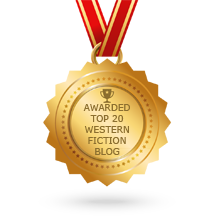ALMANAC SERIES / MAGAZINE (Nathan Never - Nick Raider -
Martin Mystère - Mister No - Tex - Dylan Dog - Zagor - Julia - Dragonero -
Dampyr - Inspector Ricciardi - Furio - Various)
An almanac series featuring annual special issues dedicated
to Bonelli's most famous characters. Each Almanac contains a previously
unpublished comic strip and informative and critical articles related to the
genre to which the character refers.
These alternate with the Science Fiction Almanac
dedicated to Nathan Never (numbers 1, 8, 14, 20, 26, 32, 38, 44, 50, 56, 62,
68, 74, 80, 86, 92, 98, 104, 110, 116, 122, 128); Almanac of Mystery dedicated
to Nick Raider (numbers 2, 7, 13, 19, 25, 31, 37, 43, 49, 55, 61, 67) and then
to Julia (numbers 73, 79, 85, 91, 97, 103, 109, 115, 121, 127); Mystery
Almanac dedicated to Martin Mystere (started as Martin Mystere Presents
Mystery Almanac in which the first six issues are published) (numbers 3,
10, 16, 22, 28, 34, 40, 46, 52, 58, 64, 70, 76, 82, 88, 94, 100, 106, 112, 118,
124, 130); Adventure Almanac dedicated to Mister No (umbers 4, 9, 15,
27, 39), to Zagor (numbers 21, 33, 45, 51, 57, 63, 69, 75, 81, 87, 93,
99, 105, 111) and to special issues on authors (numbers 117, 123, 129); Western
Almanac dedicated to Tex (numbers 5, 11, 17, 23, 29, 35, 41, 47, 53,
59, 65, 71, 77, 83, 89, 95, 101, 107, 113, 119, 125, 131); Almanacco Della
Paura dedicated to Dylan Dog (begun as Dylan Dog Presenta
Almanacco Della Paura, in which the first three issues were published)
(numbers 6, 12, 18, 24, 30, 36, 42, 48, 54, 60, 66, 72, 78, 84, 90, 96, 102,
108, 114, 120, 126). In April 2015, the series changed its format and title to
a magazine and expanded to include other series from the publishing house, such
as Dragonero and Dampyr. #176 ("The Forgotten") is not
a magazine but is called Dragonero #33 Summer 2022.
The Almanac was published in 1993 with issue #1 being
released in January of that year and ending in October with issue #192 in 2025.
It was published in Milan, Italy by Sergio Bonelli Editore under the editor
Graziano Frediani. Each issue contained 176 black and white pages with color
covers.
ALMANAC
005 (00.01.94) - Tex - Almanacco del West 1 - 1994
011 (00.01.95) - Tex - Almanacco del West 2 - 1995
021 (00.10.96) - Zagor (1) - Almanacco dell’Avventura 4 - 1997
023 (00.01.97) - Tex - Almanacco del West 4 - 1997
029 (00.02.98) - Tex - Almanacco del West 5 - 1998
033 (00.10.98) - Zagor (2) - Almanacco dell’Avventura 6 - 1999
035 (00.02.99) - Tex - Almanacco del West 6 -1999
041 (00.02.00) - Tex - Almanacco del West 7 - 2000
045 (00.10.00) - Zagor (3) - Almanacco dell’Avventura 8 - 2001
047 (00.02.01) - Tex - Almanacco del West 8 - 2001
051 (00.10.01) - Zagor (4) - Almanacco dell’Avventura 9 - 2002
053 (00.02.02) - Tex - Almanacco del West 9 - 2002
057 (00.10.02) - Zagor (5) - Almanacco dell’Avventura 10 - 2003
059 (00.02.03) - Tex - Almanacco del West 10 - 2003
063 (00.10.03) - Zagor (6) - Almanacco dell’Avventura 11 - 2004
065 (00.02.04) - Tex - Almanacco del West 11 - 2004
069 (00.10.04) - Zagor (7) - Almanacco dell’Avventura 12 - 2005
071 (00.02.05) - Tex - Almanacco del West 12 - 2005
075 (00.10.05) - Zagor (8) - Almanacco dell’Avventura 13 - 2006
077 (00.02.06) - Tex - Almanacco del West 13 - 2006
081 (00.10.06) - Zagor (9) - Almanacco dell’Avventura 14 - 2007
083 (00.02.07) - Tex - Almanacco del West 14 - 2007
087 (00.10.07) - Zagor (10) - Almanacco dell’Avventura 15 - 2008
089 (00.02.08) - Tex - Almanacco del West 15 - 2008
093 (00.10.08) - Zagor (11) - Almanacco dell’Avventura 16 - 2009
095 (00.02.09) - Tex - Almanacco del West 16 - 2009
099 (00.10.09) - Zagor (12) - Almanacco dell’Avventura 17 - 2010
101 (00.02.10) - Tex - Almanacco del West 17 - 2010
105 (00.10.10) - Zagor (13) - Almanacco dell’Avventura 18 - 2011
107 (00.02.11) - Tex - Almanacco del West 18 - 2011
111 (00.10.11) - Zagor (14) - Almanacco dell’Avventura 19 - 2012
113 (00.02.12) - Tex - Almanacco del West 19 - 2012
119 (00.02.13) - Tex - Almanacco del West 20 - 2013
125 (00.02.14) - Tex - Almanacco del West 21 - 2014
131 (00.02.15) - Tex - Almanacco del West 22 - 2015
MAGAZINE
137 (00.02.16) - Tex Magazine 1 - 2016
143 (00.02.17) - Tex Magazine 2 - 2017
144 (00.04.17) - Dylan Dog Magazine 3 - 2017
149 (00.00.18) - Tex Magazine 3 - 2018
150 (00.03.18) - Dylan Dog Magazine 4 - 2018
153 (00.00.18) - Tex Magazine 4 - 70 Anni - 2018
155 (00.00.19) - Tex Magazine 5 - 2019
161 (00.02.20) - Tex Magazine 6 - 2020
167 (00.02.21) - Tex Magazine 7 - 2021
172 (00.12.21) - Zagor Magazine 15 - 1961-2021 La grande avventura - 2021
173 (00.02.22) - Tex Magazine 8 - 2022
179 (00.02.23) - Tex Magazine 9 - 2023
184 (00.12.23) - Tex Magazine 10 - Tex 75 - 2023
185 (00.02.24) - Tex Magazine 11 - 2024
186 (00.04.24) - Avventura Magazine 12 - Tex presenta: I Grandi Eroi di G.L.
Bonelli 7 - 2024
189 (00.12.24) - Avventura Magazine 13 - Tex presenta: I Grandi Eroi di G.L.
Bonelli 8 - Kociss - 2024
190 (00.02.25) - Tex Magazine 12 - 2025
191 (00.04.25) - Avventura Magazine 14 - Tex presenta: I Grandi Eroi di G.L.
Bonelli 9 - Hondo - 2025
192 (00.10.25) - Avventura Magazine 15 - Tex presenta: I Grandi Eroi di G.L.
Bonelli 10 - Furio – 2025



























































